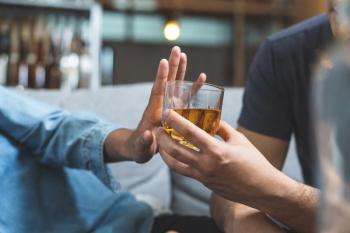
Post-TBI Gait Rehabilitation
Hypertonicity in plantar flexion is a frequent complication of traumatic brain injury (TBI), which affects more than 1.5 million persons in the United States.
Hypertonicity in plantar flexion is a frequentcomplication of traumatic brain injury (TBI),which affects more than 1.5 million personsin the United States.1
If not addressed, hypertonicitycan develop into contracture.2Infarction or other damage toupper motor neurons, resulting indecreased inhibition, is thought tocause hypertonicity.3 Hypertonicity,contracture, and the resultingfootdrop all have adverse effectson the gait pattern and the core activitiesof daily living.
Footdrop is hypertonicity inplantar flexion, causing contractureof any combination of the followingmuscles: gastrocnemius,soleus, flexor digitorum longus,flexor hallicus longus, and Achillestendon. Hypertonicity-associatedcontracture causes an exaggeratedflexion of the hip and knee thatprevents the toes from catching onthe ground during the swingphase of gait. Tone must first betreated before gait rehabilitationcan be achieved.
TREATMENT OPTIONS
Methods commonly used for treatinghypertonicity include botulinumtoxin type A (Botox) injections,tibial nerve block, serialcasting, and dynamic splinting.
Botulinum toxin type A. A double-blind controlled study performedby Pittock and colleagues4showed that a formulation of botulinumtoxin type A (Dysport,pending FDA approval in theUnited States) was useful in reducinghypertonicity and pain in patientsrecovering from cerebrovascularaccident (CVA). The studymeasured the effect that differentdoses of the agent had on tone in234 patients with CVA-associatedgastrocnemius hypertonicity thataffected their gait pattern.
Patients randomly received eitherplacebo or 500, 1000, or 1500 Uof botulinum toxin type A. Althoughthe highest dose yieldedthe most significant benefit in reducinghypertonicity, limb pain,and need for walking aids, significantimprovement also was seenin patients receiving 1000 U of theagent and some benefits were seenin patients receiving 500 U as well.
Sixty-eight patients reported atotal of 130 adverse events (infection,seizures, lack of coordination,and injection site pain or stinging).However, the study authors concludedthat the drug was relativelysafe and may be useful in thetreatment of poststroke rehabilitationfor gait complications.
Another smaller study (N = 20)that looked at combination botulinumtoxin type A and functionalelectrical stimulation (FES)5 foundthat a 200-U injection of botulinumtoxin to the lateral and medial gastrocnemiusmuscles and a 400-Uinjection to the tibialis posteriorcombined with 16 weeks of dailyFES in addition to physiotherapyresulted in greater improvementsin walking speed and function inthe treated group than in controls.
Tibial nerve block. The value oftibial nerve block in poststrokegait rehabilitation was examinedin a study by Jang and colleagues.6This case series examined alcoholneurolysis of the motor branchblock of the gastrocnemius to reduceplantar flexor tone and spasticityfollowing a CVA. The studyevaluated spasticity using theModified Ashworth Scale (MAS)and passive range of motion(PROM) of ankle dorsiflexion. Ofthe 22 patients monitored for 6months after treatment, 17 demonstratedreduced MAS scores andthe remaining 5 experienced a returnof spasticity of the same degreeexperienced during pretreatment. PROM improved for all patientsin this study.
Serial casting. Serial casting is oftenused to treat excessive plantarflexion in pediatric patients withcerebral palsy,7 but it is also usedin patients who have experiencedTBI or CVA.2,8 In a study by Singerand colleagues2 that included 105patients with TBI, 23 (21.9%) weredystonic and 14 (13.3%) had musclespasticity. Seventeen patients(16.6%) had ankle contracture. Inan earlier study by Singer and colleagues,8 the researchers demonstratedthe value of short-term serialcasting for equinovarus ankledeformity.
Serial casting is a proven, effectivemethod of reducing contracture,2,8-10 but it restricts activities ofdaily living and is not always thefinal solution to tone management.Serial casting is often used successfullywith concurrent botulinumtoxin injections.11
Dynamic splinting. Dynamicsplinting uses low-load, prolongeddurationstretch to remodel andpermanently elongate connectivetissue. A controlled, cohort studyexamined the effectiveness of dynamicsplinting for unresolved plantarflexion contracture in 25 patientswith CVA and in 15 patients withTBI.12 Patients were recruited fromreferring neurologists and physicalmedicine specialists from across thecountry. All patients had experiencedexisting contracture that impairedgait for more than 1 year.
Initially, all patients were treatedwith standardized therapeuticprotocols (moist heat, patient education,joint mobilization [limitedto progressive end-range joint mobilization],PROM, and therapeuticexercise in active range of motion).After the initial 90 days, asignificant change in mean PROMwas only seen in patients withCVA. Dorsiflexion in PROM in responderswent from −20 degreesto −7 degrees (P = .004) but contractureremained unresolved inall patients. The Ankle DorsiflexionDynasplint (Dynasplint Systems,Inc) was then prescribed foran additional 90 days after thetherapy had been completed.
At the conclusion of the secondphase, both study groups showed asignificant change in PROM (P =.001). A post hoc analysis showedno statistical difference between theCVA and TBI groups after dynamicsplinting (P > .05). This suggests thatthe biomechanical action of lowload,prolonged-duration stretch ina dynamic splint (worn while sleeping)causes physiological remodelingfor contracture reduction.
THERAPEUTICCONSIDERATIONS
When deciding on a treatmentplan, clinicians should considerthe following:
- Safety. The methods for managinghypertonicity described in thisreview have been shown to be relativelysafe. Adverse effects havebeen reported with botulinum toxintype A, such as infection, seizures,lack of coordination, and injectionsite pain or stinging.10,13
- Effectiveness. All methods describedhave shown some effectiveness.Botulinum toxin injectionseventually are limited byimmune responses that can includeanaphylaxis.14,15 Serial castingcan evoke unresolved contracturethat must be treated withadditional therapeutic treatmentssuch as botulinum toxin.
- Cost. Dynamic splinting and serialcasting may be the most costeffective.Dynamic splinting maycost $300 to $500 per month and serialcasting may cost only $200 percasting session requiring weekly replacementcasting. Botulinum toxininjections often cost several thousanddollars per injection and areunaffordable for indigent patients.
- Time. The most effective use oftime would be combining differentmodalities such as botulinumtoxin injections and dynamicsplinting, thus allowing the patientto have less restriction on activitiesof daily living.
References:
REFERENCES
1.
Bazarian JJ, McClung J, Shah MN, et al. Mildtraumatic brain injury in the United States, 1998-2000. Brain Inj. 2005;19:85-91.
2.
Singer BJ, Jegasothy GM, Singer KP, et al. Incidenceof ankle contracture after moderate to severeacquired brain injury. Arch Phys Med Rehabil.2004;85:1465-1469.
3.
Preston LA, Hecht JS. Spasticity Management:Rehabilitation Strategies. Bethesda, Md: AmericanOccupational Therapy Association; 1999.
4.
Pittock SJ, Moore AP, Hardiman O, et al. Adouble-blind randomised placebo-controlledevaluation of three doses of botulinum toxin typeA (Dysport) in the treatment of spastic equinovarusdeformity after stroke. Cerebrovasc Dis.2003;15:289-300.
5.
Johnson CA, Burridge JH, Strike PW, et al. Theeffect of combined use of botulinum toxin type Aand functional electric stimulation in the treatmentof spastic drop foot after stroke: a preliminaryinvestigation. Arch Phys Med Rehabil. 2004;85:902-909.
6.
Jang SH, Ahn SH, Park SM, et al. Alcohol neurolysisof tibial nerve motor branches to the gastrocnemiusmuscle to treat ankle spasticity in patientswith hemiplegic stroke. Arch Phys MedRehabil. 2004;85:506-508.
7.
Flett PJ, Stern LM, Waddy H, et al. Botulinumtoxin A versus fixed cast stretching for dynamiccalf tightness in cerebral palsy. J Paediatr ChildHealth. 1999;35:71-77.
8.
Singer BJ, Jegasothy GM, Singer KP, Allison GT.Evaluation of serial casting to correct equinovarusdeformity of the ankle after acquired brain injuryin adults. Arch Phys Med Rehabil. 2003;84:483-491.
9.
Classen DA, Hurst LN. Plantar fibromatosisand bilateral flexion contractures: a review of theliterature. Ann Plast Surg. 1992;28:475-478.
10.
Stoeckmann T. Casting for the person withspasticity. Top Stroke Rehabil. 2001;8:27-35.
11.
Hesse S, Brandi-Hesse B, Bardeleben A, et al.Botulinum toxin A treatment of adult upper andlower limb spasticity. Drugs Aging. 2001;18:255-262.
12.
Lai J, Jones M, Willis B. Efficacy of dynamicsplinting on plantar-flexion tone and contractureseen in CVA and TBI patients: a controlled, crossoverstudy. Arch Phys Med Rehabil. In press.
13.
Turkel CC, Bowen B, Liu J, Brin MF. Pooledanalysis of the safety of botulinum toxin type Ainthe treatment of poststroke spasticity. Arch PhysMed Rehabil. 2006;87:786-792.
14.
Brin MF. Botulinum toxin: chemistry, pharmacology,toxicity, and immunology. MuscleNerve. 1997;6(suppl):S146-S168.
15.
Ravichandran E, Gong Y, Al Saleem FH, et al.An initial assessment of the systemic pharmacokineticsof botulinum toxin. J Pharmacol Exp Ther.
Newsletter
Receive trusted psychiatric news, expert analysis, and clinical insights — subscribe today to support your practice and your patients.















